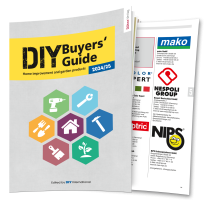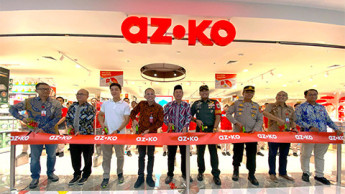The UK DIY multiples market has grown rapidly over the last decade to reach over £5.7 billion at retail prices in 2001
The number of DIY multiple outlets stabilised during the middle of the decade and multiples are now focusing on increasing store sizes and developing ranges on a wider scale, such as housewares, garden products, crafts etc. According to a report of AMA Research, there is a definite trend in the market becoming apparent, with the multiples looking to create a more unique market position and hence differentiation.
The major product groups offered by the multiples, are garden products with an estimated 23% of multiples turnover, followed by decorating materials with 16%, building materials with 15% and hardware/housewares with 10%, furniture with 8%, and bathroom products with a similar share. Window and Floor coverings have gained some share at around 5% in 2001, while other sectors for the multiples include electrical and lighting accessories. There also appears to be a trend toward other miscellaneous sectors such as seasonal goods and giftware.
Other leading product sectors include Tools, DIY products, adhesives and a wide range of miscellaneous products. One key growth sector in recent years has been garden products, reflecting growth by Homebase and an increasing orientation to garden products by B & Q and other multiples. The re-branding of Focus stores to ‘Focus for DIY and Gardening’ underlines the fact that this trend is likely to continue. Building product sales continue to increase through B & Q Warehouses and Wickes or Focus / Wickes (FW) outlets.--nextpage--
The role and importance of the multiples varies significantly between the major product groups with DIY multiples accounting for significant shares of the decorative products, garden/leisure and bathroom sectors with 41, 37% and 30% respectively. Conversely, the share for building materials is only around 4% of the total market, though there are some specific product sectors where the share is somewhat higher eg timber and plumbing materials. The overall share is low due to the high volume of heavyside building materials (bricks, blocks, cement, aggregates etc) which are delivered direct to end-use application areas. Individual variations between the major multiples in terms of product ranges are significant with recent and continued changes in market positioning.
As the DIY market matures further, it will become more important for multiples to have a clear identity and distinct market position. Sophisticated consumers will then perceive particular DIY companies as appropriate for specific needs. The development of more home enhancement/adornment ranges reflects the inability for multiples to maintain high growth levels in the maturing market through low price levels alone. There appears to be a definite need for multiples to address this, and offer added/higher value products and services than traditionally offered.
The multiples are also expanding their target market sectors from DIY products, into pet products, home enhancement, craft products etc. This is offering real potential for current and future growth of the sector, by taking share from other channels of distribution. In addition, some multiples take a more ‘holistic’ approach to DIY, offering all the materials required to complete a project, such as a new bathroom, living room etc as part of a whole room-enhancement approach.
Potential for growth exists in terms of taking share from other channels, either hardware, garden or DIY channels, or possibly pet products, craft and textile sectors. In addition, more focused market positions by the major multiples will be a growing feature of the market, reflecting their drive to become more profitable.

 Menü
Menü














